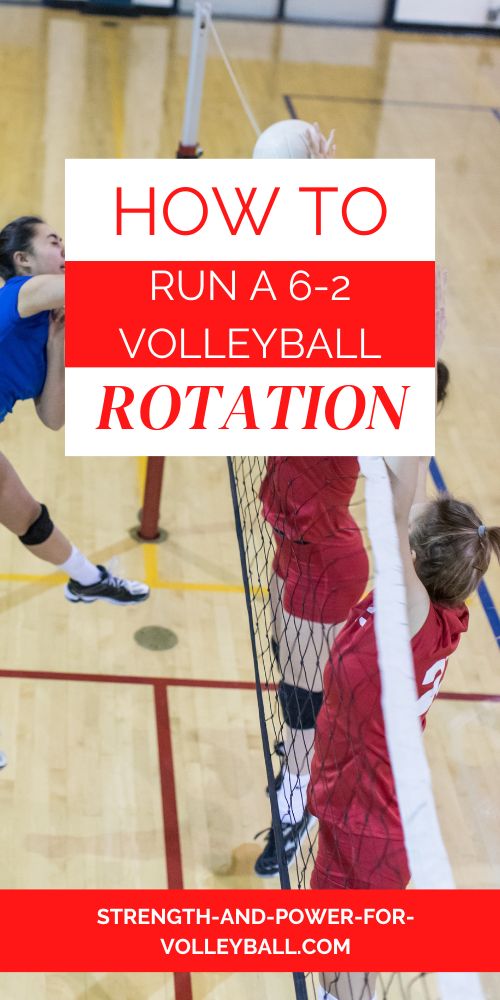Volleyball Formations 6-2 Explained
6-2 Volleyball Rotation
After watching my video on volleyball formations 6-2, you won't need to keep bugging your teammates asking them where do I go and when do I move.
No more anxiety and stress from not knowing your volleyball rotations. You’re going to understand what to do!
It’s important for each player to understand the 6-2 offense because each player needs to know where to be on the court.
Goal of the 6-2 Offense
The purpose of having an offensive system is so that the team has a game plan. If you want to be successful you need a strategy. The 6-2 system is part of your overall strategy.
Why Volleyball Formations 6-2?
6-2 means 6 attackers and 2 setters.
Each setter sets when on the back row. This means the team will always have 3 attackers on the front row in every rotation.
This is different from the 5-1 rotation in that with a 5-1, one setter sets in every rotation. This means the setter will be setting when on the front row. When the setter is on the front row, there are only two front row attackers.
So, the advantage of the 6-2 is that there will always be 3 front row attackers in every rotation the opponent will have to defend.
If you have two great setters and two great Right Side players, then 6-2 will work really well. Each setter sets when on the back row. When rotating to the front row, the setter is replaced by the Right Side.
Having one extra hitter can make the team really good.
So, if the right sides are really good, definitely consider running a 6-2 offense.
However, there is a big disadvantage to running a 6-2.
When running a 6-2, the quality of setters drops because they are only setting 50% of the time.
But if your setters are really good, consider running the 6-2.
Also, you need a back-up plan for when running out of substitutions. It can be especially difficult if you sub out the right side when coming across the back row.
Understanding Player Roles in a 6-2 Offense
Each player on the team has a specific role.
Setter. The setter runs the offense. In a 6-2 offense, you have two setters. The setters play opposite on the court. So when one setter is front row, the other setter is back row. If you are setter and lost on the court, simply look to see where the other setter is positioned. If for example, the other setter is in Left Front (LF) position, then you know you should be in the opposite position Right Back (RB).
Opposite or Right Side Hitter. The position opposite the setter is referred to as the Opposite or Right Side Hitter. When the setter rotates to the front row they will often be replaced by a player that specifically comes in the match to play on the front row on the right side. If the setter stays in the match on the front row, then they will be the right side player.
Outside Hitter. There are two outside hitters that play opposite one another. The primary outside hitter is called H1 and is the player that follows the primary setter in the rotation. The other outside hitter is the H2.
Middle Hitter (Middle Blocker). There are two middle hitters that play opposite one another. The primary middle hitter is called the M1 and is the player that is ahead of the primary setter in the rotation. The other Middle Hitter is the M2. The Middle Hitter is often just referred to as the “Middle”.
Libero. A Libero is a unique player that has unique responsibilities. The Libero can only replace back row players and be in the match on the back row. The purpose of the Libero position is for a team to have a specialized player that’s in the match specifically to pass and defend. The Libero replacement isn’t a substitution and the Libero can replace any player in a back row position.
Defensive Specialist. The team can have players called defensive specialists (DS). These are just like a regular player, but they primarily will come in the match by substitution for a back row player. Like the Libero, the defensive specialist comes into the match to pass and defend.
Volleyball Rotations and Volleyball Formations 6-2
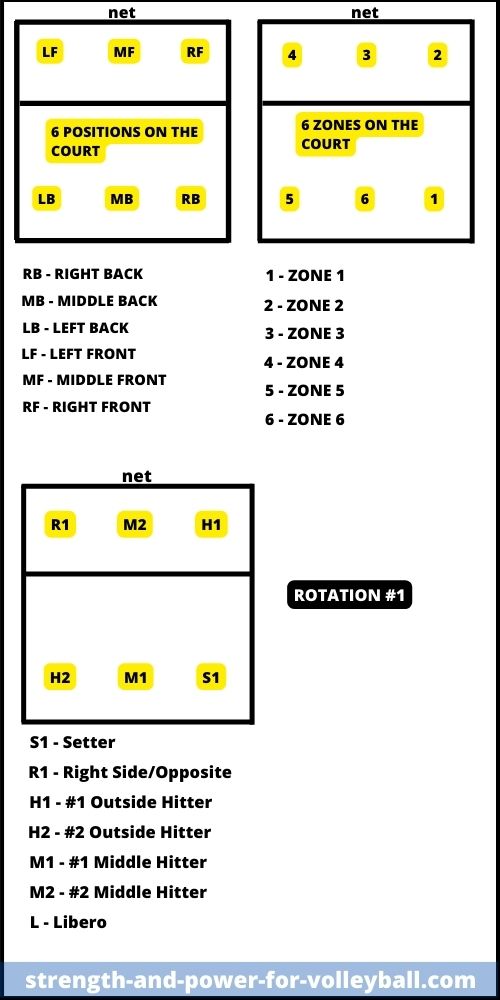
Rotation 1
Setter #1 (S1) starts RB. R1 is in the LF in place of Setter #2 (S2). After the ball is served, R1 switches positions with H1. The Libero is in the back row in place of M1.
For serve receive, H1, L, and H2 are passing.
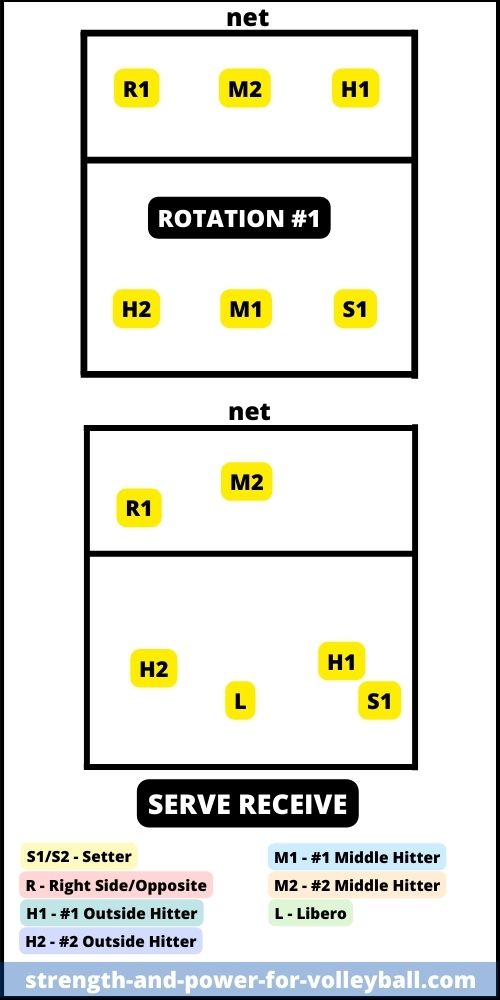
Rotation 2
H1 RB. Setter is now MB. Libero is LB. H2 is now LF. R1 is MF. M2 is now RF. After the ball is served, R1 and M2 switch positions.
In serve receive, H1, L, and H2 are passing. The setter pushes the Opposite to the net to prevent an overlap.
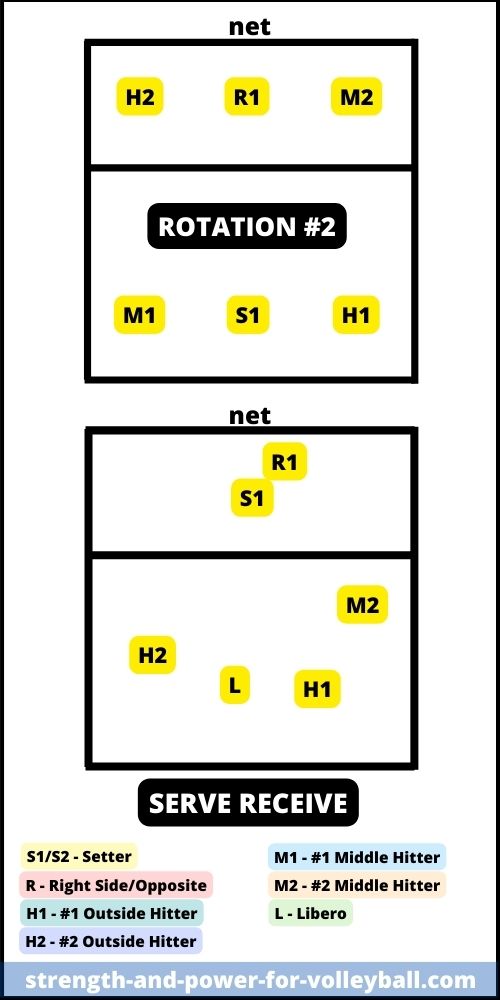
Rotation 3
The setter is LB. The Libero replaces M2.
In serve receive, L, H1, and H2 are passing. S1 moves over to H1 to get closer to the target area.
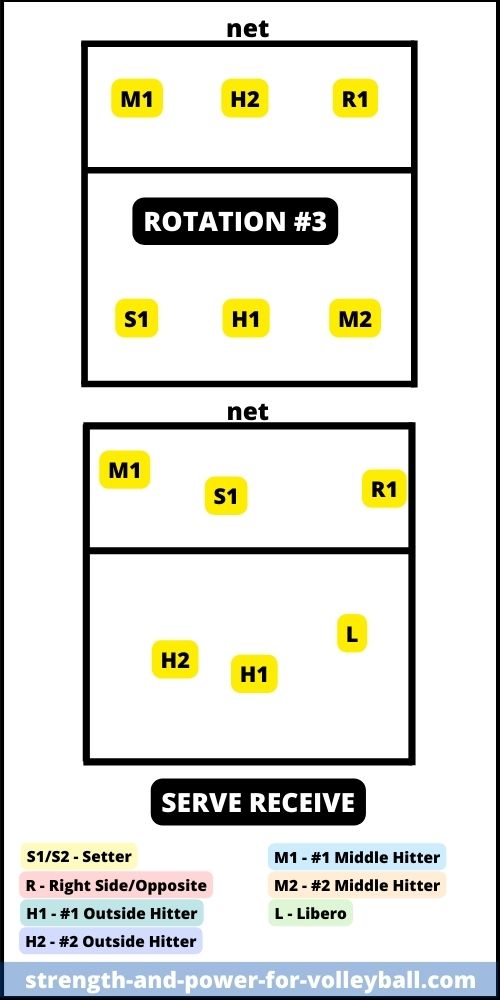
Rotation 4
The R2 replaces the setter in the front row. The new setter comes in to serve.
For serve receive, H2, L, and H1 are passing.
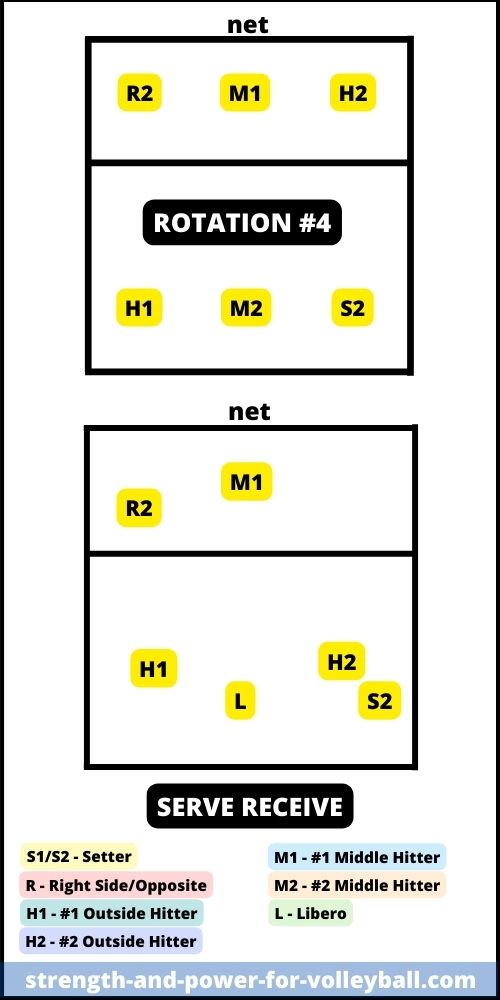
Rotation 5
The setter is now MB. After the ball is served, R2 and M1 switch positions.
In serve receive, H2, L, and H1 are passing. M1 can help with passing if necessary.
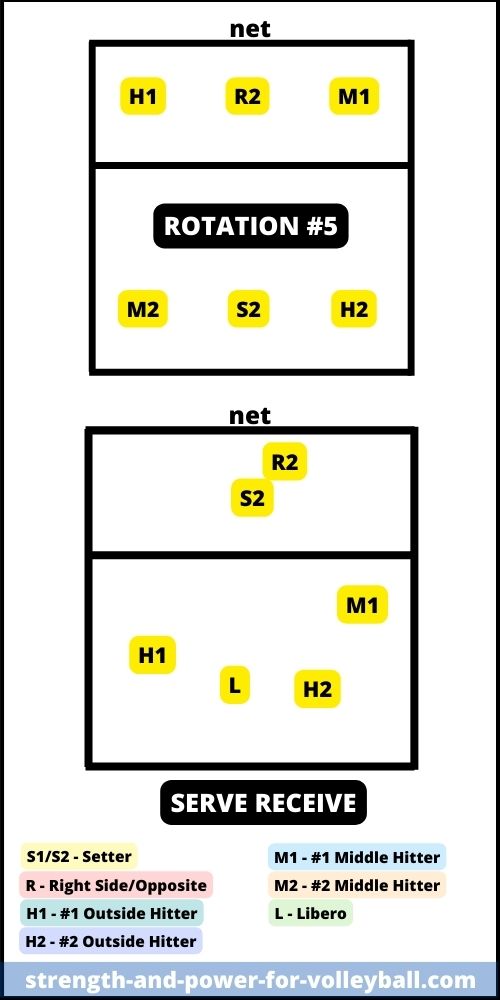
Rotation 6
S2 is now LB. After the ball is served, H1 switches to the outside, M2 switches to the middle.
For serve receive, L, H1, and H2 are passing.
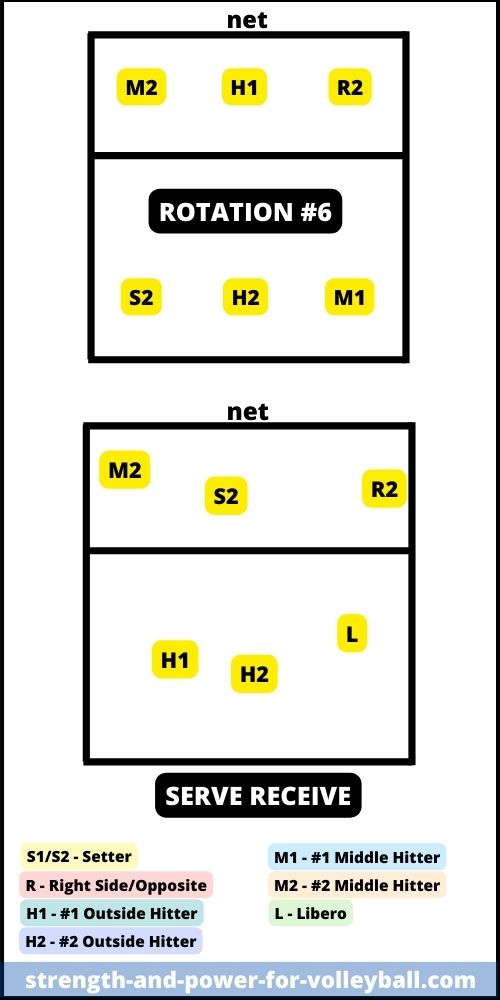
Volleyball Formations 6-2
If you enjoyed these tips and would like to keep it close to you at any time, just save this pin to your Pinterest Volleyball Training Board.
- Home
- How to Play
- 6-2
